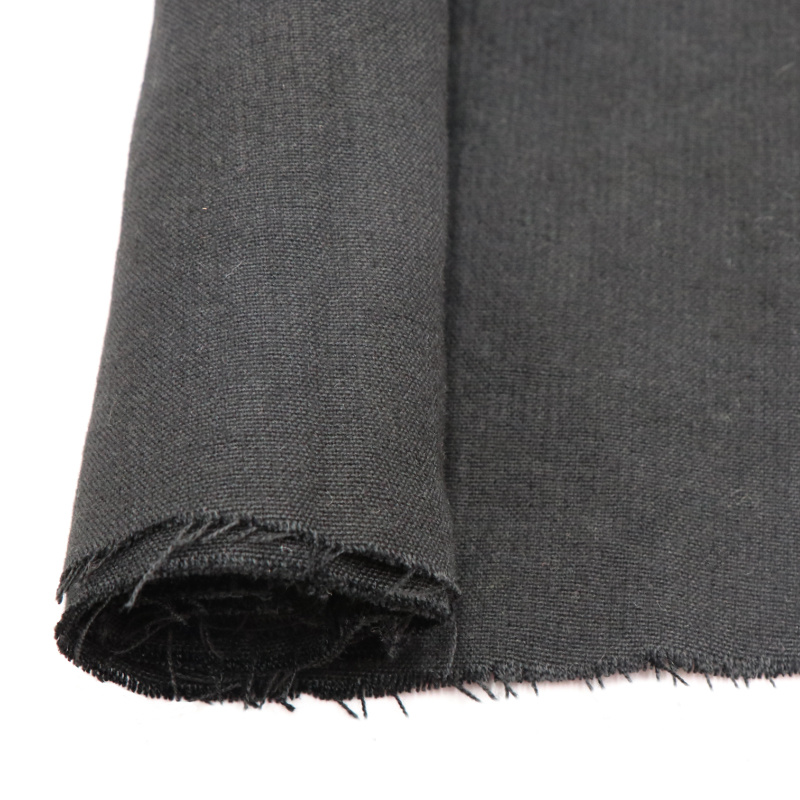Flame-retardant fabric is used for the inner lining of high-speed train seats to address fire safety issues in the carriage.
Aug 04,2025

Pre-oxidized fiber woven fabric
1. Excellent flame retardancy and fire resistance:
It does not burn, melt, or drip when exposed to an open flame; it self-extinguishes after removal from the flame. The limiting oxygen index is typically as high as 55% or more, classifying it as a flame-retardant material.
Under high-temperature flames, it can maintain structural integrity for a long time, directly carbonizing to form an effective heat insulation barrier.
2. Excellent high-temperature resistance:
It can be used for extended periods at temperatures of 200-250°C.
It can withstand short-term, instantaneous high-temperature shocks of 500-600°C or even higher (such as welding sparks, molten metal splashes).
It does not soften or melt at high temperatures and exhibits good dimensional stability.
3. Good thermal insulation:
It has a relatively low thermal conductivity and can effectively insulate against heat transfer, protecting people or equipment from high-temperature damage.
4. Good chemical stability:
It is resistant to corrosion from most acids, alkalis, and organic solvents (except strong oxidizing acids), making it suitable for applications in corrosive environments such as chemical plants. [The above data is from online sources and laboratory tests]
5. Certain mechanical strength and wear resistance:
Its strength is higher than that of ordinary textiles; it has good wear resistance and tear resistance, resulting in a longer service life.
It is softer than carbon fiber cloth and is easy to cut, sew, and process into various shapes.
6. Low smoke and non-toxic:
At high temperatures or during combustion, it releases very little smoke and does not produce toxic gases, meeting stringent environmental and safety requirements.
7. Good conductivity (relative to ordinary fabrics):
Pre-oxidized fibers have a certain degree of conductivity (between ordinary fibers and carbon fibers), giving them anti-static properties and making them advantageous in situations requiring electrostatic protection. However, this also means it is not an insulating material.
8. Good dimensional stability:
It has a very low shrinkage rate in high-temperature environments and maintains a stable shape and size.
Application areas:
Personal protective equipment:
Firefighting suits: As a key material for the flame-retardant and heat-insulating layer, it protects firefighters from flames, high temperatures, and thermal radiation.
Industrial protective clothing: Welding suits, furnace worker uniforms, foundry worker uniforms, petrochemical worker uniforms, etc., protecting against welding sparks, molten metal splashes, high-temperature radiation, and hot surface contact.
Racing suits/racing car interiors: Areas with very high fire and flame retardant requirements.
Police uniforms: Used in special combat uniforms with fire and explosion protection requirements.
Industrial thermal protection and insulation:
Welding blankets/fire blankets: Covering the welding area to prevent sparks from igniting surrounding items or protecting precision equipment.
High-temperature pipe/equipment insulation layer/wrapping material: Reducing heat loss or preventing personnel from being scalded.
Kiln/oven curtains, sealing materials: High-temperature resistant, heat-insulating.
Molten metal protective curtains/baffles: Protecting against splashing molten metal in the foundry and metallurgical industries.
Engine compartment insulation: Fire, sound, and heat insulation for automobile, ship, and aircraft engine compartments.
Fire curtains/fire door core materials: Used for fire separation in buildings.
Aerospace and transportation:
Fire-resistant seat covers, wall panels, curtains, and carpet backing in aircraft, high-speed rail, and ships.
Fire-retardant and heat-insulating materials around engines.
Fire safety and emergency response:
Escape blankets (lighter than ordinary fire blankets).
Fire-resistant coverings for important equipment and artifacts.
Fire-resistant tents and fire-resistant storage materials.
Filter materials:
Used in high-temperature dust filter bags (such as coal-fired boilers, garbage incinerators, and cement plants), they are high-temperature resistant, corrosion-resistant, and flame-retardant.
PREVIOUS:
Related Posts
Contact Us
E-mail:
gdkaidun@163.com
Phone/WeChat:
86-131-3828-6677
Address:
Room 401, Building 21, No. 1, Keqing Road, Yundonghai Street, Sanshui District, Foshan City, Guangdong Province





